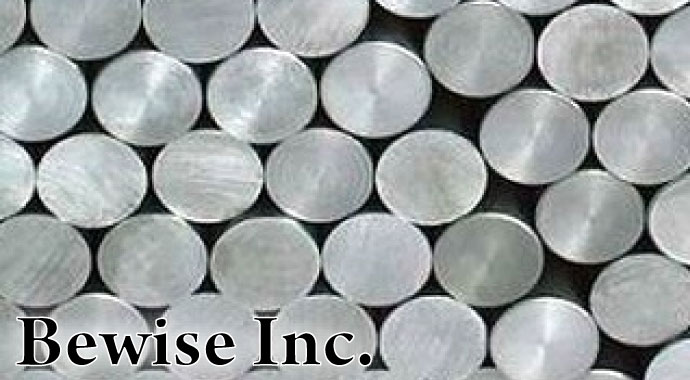Principles of Difficult Cutting Material

The materials of high strength with poor workability or high hardness metal, makes the cutting tool life is shortened, or the volume crumbs, chip breaker difficulties, or machining surface quality is poor, or a combination of several above phenomena, therefore such materials are called difficult cutting metal materials. The common difficult materials we often meet includes stainless steel, Ti alloy, high temperature alloys, high-strength steel, high manganese steel, etc.
Main factors of difficult cutting materials:
- Material containing high hardness ingredients
- High hardness or high-temperature hardness, work hardening
- Poor thermal conductivity, high cutting temperatures
- The strength of the material is high, especially in high temperature strength
- Easy bonding with the cutter
- Vivid chemical activity
Cutting principles of working difficult materials:
- Use reasonable tool material
Cutting tools need to be small chemical affinity with difficult material, good thermal conductivity, high strength, stable, good hot hardness, wear resistance and good heat dissipation ... Common suitable tools includes the PCD material tool (polycrystalline diamond tool), coated carbide cutting tools,PCBN tool ... - Improving cutting conditions
- Machine -clamping-the rigidity of the fixture should be excellent, tool system is better. Part of the gap of the machine to be adjusted, spindle runout is smaller. The fixture work piece clamping should be strong, have sufficient rigidity.
- To maintain a sharp blade to ensure that the chip removal smooth, to avoid sticky crumbs chipping.
- Select a reasonable cutting parameters
Select a reasonable cutting parameters. Because the temperature of the cutting speed of cutting edge of the cutting speed the higher the cutting edge temperature excursions, cutting edge temperature directly affect the life of the tool, so you want to choose the right cutting speed. - The appropriate heat treatment of the work material
Through heat treatment to change the performance of the hard cutting material and crystal phase organization to achieve the purpose of improving the machining of materials. - Reasonable design of tool structure and tool geometry parameters
- Choose appropriate cutting fluid and liquid supply method
- Use vibration cutting, plasma arc heating cutting new technology or EDM, electrochemical, etc.
※ It is very important that cutting adjustment and revolutions between the cutting speed of main spindle and work depth, which considering the three following aspects:
- tool wear
- spindle loss
- bed desk loss
Although the processing speed is the basic request for the job, but considering the maintenance cost for longer time, the most expensive one is the maintenance of machine spindle, bed sets loss maintenance followed, should especially avoid spindle damage, it is recommended that the spindle revolutions should be maintained at an acceptable number of revolutions appropriate (if the spindle revolutions excessive, will cause the machine processing sound too large, you should adjust the spindle speed), if the cutting speed is fast, the depth eating should be shallow; Conversely, if the cutting speed is slow down, the depth can be deeper . Getting cutting characteristics of work piece, then controlling good cutting speed and processing depth, the tool life can be maintained under normal wear and tear.
Reference Information Source: tool designed Huang Rongwen
News
- Cutting fiber-reinforced composite material - Part I
- Principles of Difficult Cutting Material
- Rougher cutters and wave groove milling cutters
- Slitter Knives
- Cutting test for metal ceramic end mills
- Applied tool for automotive industry
- Characteristics of Tungsten Carbide Cutter
- Discontinuous or Segmental Chips
- General cutting tool material
- Production process of cutting tools
- Cutter wear and life
- The super-hard thin film coating material
- Anticlockwise milling and clockwise milling
- Cutting Reference Data for End Mills of Various Materials
- The cutter materials and their contrast
- The cutting tool for hardening material above HRC50
- How to choose woodworking cutters?--part2
- How to choose woodworking cutters?--part1
- Cutter selection Part-2
- Cutter selection Part-1
- What is cutting tool?
- Characteristics of precision miniature cutting tools
- Plain Milling Cutter,End Mill,Side Milling Cutter,Face Milling Cutter
- What’s the difference among tungsten carbide, tungsten steel cutter, and super hard alloy cutter?
- How to calculate the clamping length of the CNC lathe clamp for cutting tools?
- Selections and types of End Mills
- Definition and types of hard metal and difficult material
- How do end mills choose and judge working conditions?
- PCD circular saw blades
- 3 Jaw Adjustable Oil Filter Wrench
- Plastic Power Inductor Machine
- ZrO2 Introduction
- Common mode Choke Inductor machine
- Cutting tool-90° Step Drill
- Cutting tool-Circular saw with metal ceramic blade
- 3000°C Graphite crucible
- Cutting tool-Diamond Product
- SiC Granulation molding machine
- Cu75Ga25, Cu40In60 Target Material
- High-Entropy Alloys
- 8 flute T type Single-Angle Chamfering Cutter
- CNC 5-axis machining technology-Shoe Mold
- Grinding up to nano powders
- Cutting tool-Sharp Top Single Flute Drilling Cutter
- Cutting tool-Precise Engraving Milling Cutter
- Cutting tool-PCD Inserts
- Inductor Powder Compacting Press
- Cutting tool-Electroplated Diamond tools
- Cutting tool-Acrylic Cutting Tools
- Compound Sharpener
- BW carbide cutter cut carbide material
- Cutting tool-Staple Cutter
- Cutting tool-Diamond cutter in grooving floors



















